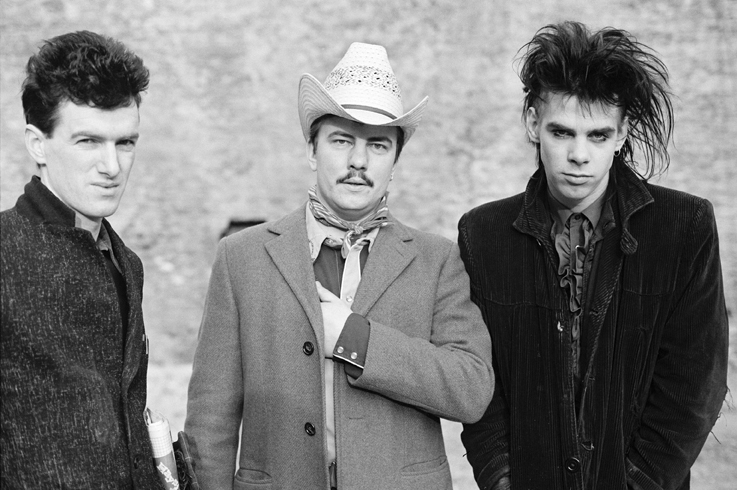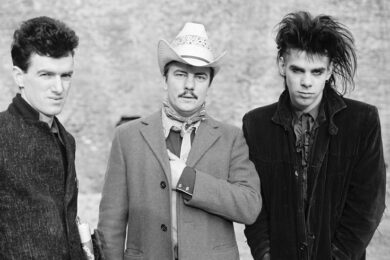Imagine Orange Juice era Edwyn Collins skating on thin ice in a pictorial homage to Sir Henry Raeburn’s painting, The Skating Minister. Or a pre-chart success Associates singer Billy Mackenzie tying up his shoe-lace like a cherubic choir-boy and wearing what looks like a school jumper. How about future Creation Records maestro Alan McGee sporting a full head of hair with his first band The Laughing Apple? A tweed-clad Aztec Camera looking like landed gentry fashion models as they suck ostentatiously on pipes? All these images and more can be seen in What Presence! a long overdue exhibition of photographs by Harry Papadopoulos that opens at Glasgow’s Street Level gallery this weekend. There is also a pixie-like Claire Grogan of Altered Images, Subway Sect’s Vic Godard in full-on crooner mode, Stephen Pastel inventing C86, Fay Fife getting gobby in The Rezillos, Scars, Strawberry Switchblade, Nick Cave in The Birthday Party, Boomtown Rat Bob Geldof in a Santa suit and Suggs in a second-hand car lot.
Drawn from a vast archive of pictures taken between 1978 and 1984 when Papadopoulos was one of the main photographers on UK music paper Sounds, the 355 originals on show capture that fertile era of post-punk.
Named after a mid-period Orange Juice song, What Presence! was first mooted by Ken McLuskey of The Bluebells. He was later joined by Douglas Macintyre of Creeping Bent Records, who had a hand in releasing Belle and Sebastian’s debut album, Tigermilk, on the Electric Honey label. McLuskey knew Papadopoulos from their time hanging round the so-called The Postcard Flat, the ground zero of a scene that would mythologise itself as The Sound of Young Scotland and invent indie-pop as we know it.
Papadopolous would take pictures of The Clash at Glasgow Apollo, then sell black and white 10 x 8 prints outside for the princely sum of fifty pence. Even after decamping to London, Papadopoulos would end up taking pictures of Josef K, Fire Engines and others from Scotland’s emergent wave of jangular acts weaned on New York No Wave and championed by Sounds writer Dave McCullough, that paper’s taste-making equivalent of Paul Morley.
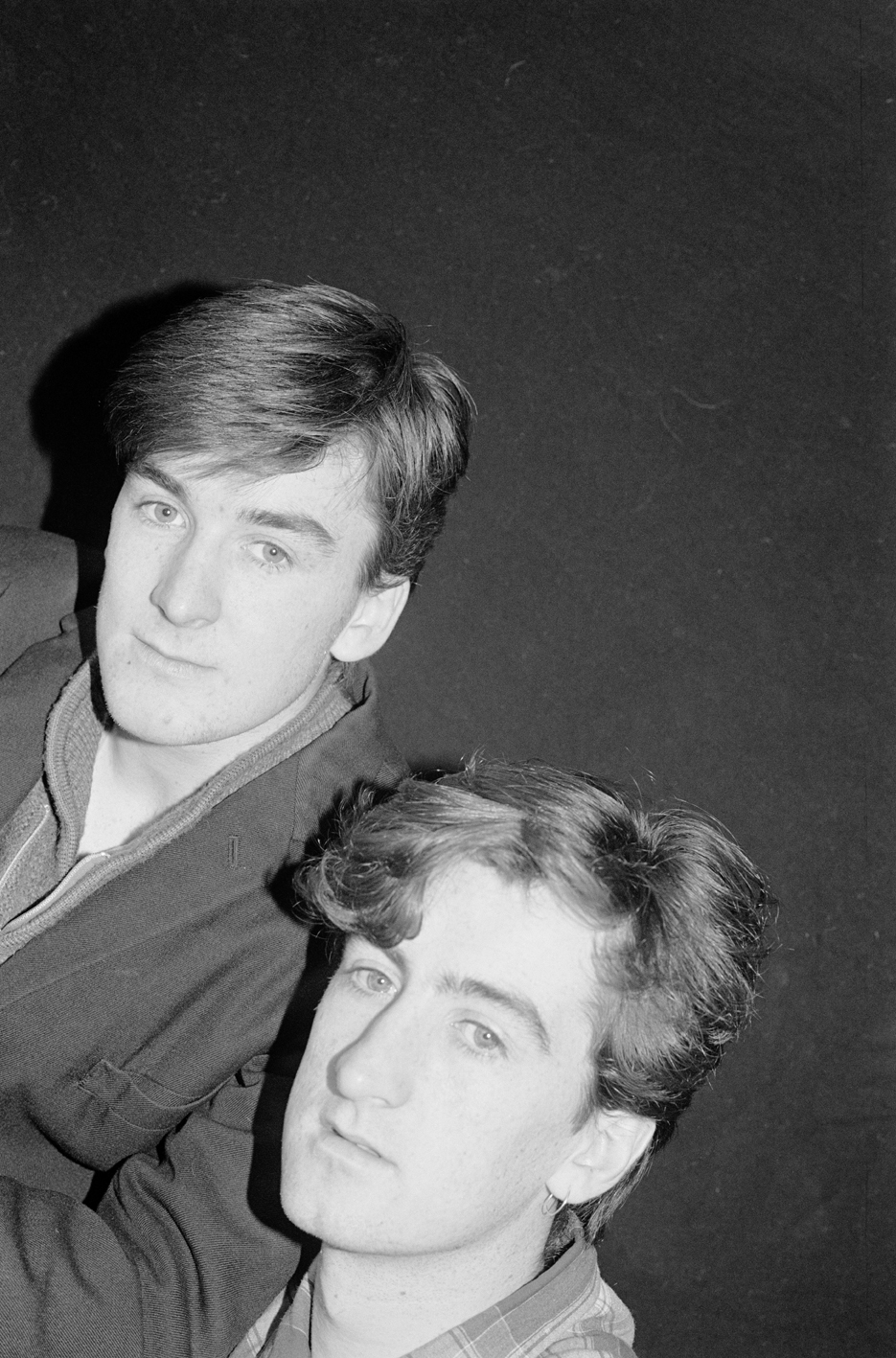
The Bluebells are there too, crammed into an open-topped speed machine in a car showroom.
“My nose is slightly bent now,” McLuskey says while peering at an image of his younger self. “But I look at that picture and I see someone with a straight nose.”
The unforced, all-lads-together gang mentality that exudes from the image was indicative of Harry’s laid-back style.
“He’d never get you to pose,” McLuskey remembers. “You’d just wander round and about, then he’d spot something and you’d try stuff out. For the Fire Engines shots, he got them to go in Davy Henderson’s mum’s back garden.”
The end result looked like a scene that literally didn’t stand still.
When The Bluebells scored a couple of chart hits with ‘Young At Heart’ and ‘Cath’, The Bluebells moved into London hotel-land, and McLuskey and Papadopoulos lost touch for the next twenty years.
Only when McLuskey hired Papadopoulos’ electrician brother Jimmy to rewire his flat in Glasgow’s west end did he ask after the photographer, who, like Sounds and the other music press inkies, had long disappeared from view. It turned out Papadopoulos had moved away from photography and become an editor at Marvel Comics, where he somewhat incongruously worked on The Care Bears magazine and Scooby Doo comics before moving into web design.
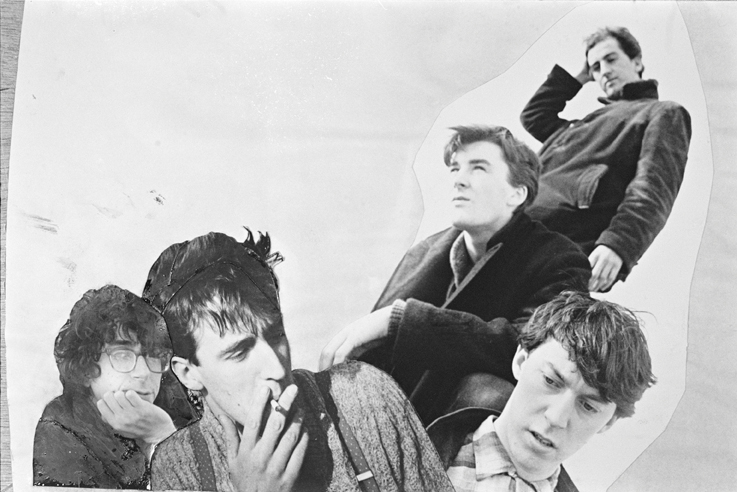
More recently, Papadopoulos suffered an aneurysm in 2002. McLuskey visited his old Glasgow scene chum, and found a goldmine of neglected negatives that formed the basis of What Presence!
McLuskey spent the next two years digitising the images, eventually approaching Street Level director Malcolm Dickson. The gallery concentrates on the social relevance of the photographic image as much as the artistic, and Dickson a serious music head who also happened to possess every issue of Sounds dating back to 1976, it was a perfect match.
For Dickson, “As well as some of the very personal resonances Harry’s work brought back, it kind of clicks with some of our concerns with Street Level in terms of recovering aspects of the cultural past and re-presenting things that otherwise might be forgotten. It also throws up a lot of questions about the photographic image and the archive. It’s one thing to say we’re going to archive all of Harry’s images, but where do they go? Who looks after them? What digital form do they migrate to down to the line when the current one becomes obsolete? Also, by doing this we’ve been alerted to other people who were operating in the same period, but who’ve been eclipsed by the mediocrity of the present.”
In the run up to What Presence!, Dickson and McLuskey are enjoying playing detective.
“Even up till a couple of weeks ago it was a case of guessing the band with some of the images,” says McCluskey. “There are certain places you recognise from the décor, like Glasgow Polytechnic or the inside of Nightmoves [a club on Sauchiehall Street in Glasgow where many bands played during the early 1980s], but there are other things you don’t know at all."
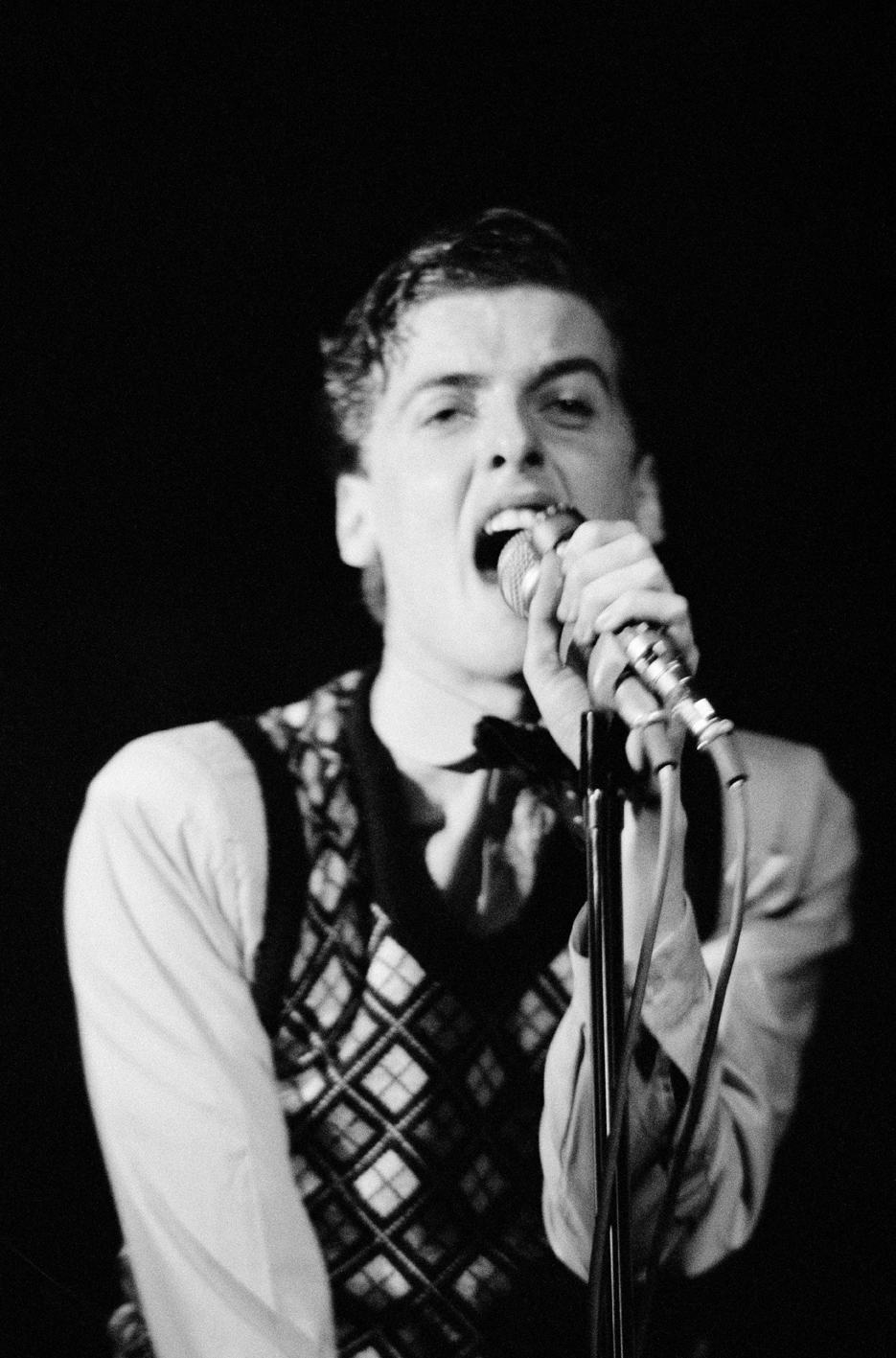
Some of the politics of the era also creep through in Papadopolous’ work, most notably in a shot of “the gay triumvirate” of Tom Robinson, Jimmy Somerville and future Erasure star Andy Bell on a gay rights march.
“At that time nobody had a job, so you had to find another outlet,” McLuskey remembers, “so everyone formed bands or took pictures or did something. Then Thatcher came in and the Miner’s Strike happened, and that was the beginning of the whole post-industrial culture. you had to make it up, and I think you have to make it up again now. This time mirrors that time. It resonates, and young bands now, they don’t give a fuck. They’ve decided being in a band is what they’re going to do. They might not have any money, but they dress great and they all have their own record labels and put on their own gigs.”
With the negatives of some images lost, the only record of shots of the likes of a post Pere Ubu David Thomas playing Heaven or ex Fall guitarist Martin Bramah’s scallydelic outfit The Blue Orchids are those on the photocopied pages of Dickson’s collection of Sounds. Some rare shots of Felt will also be in What Presence!, and that band’s former frontman has already visited Street Level for an advance preview while in Glasgow for a screening of Paul Kelly’s film homage, Lawrence of Belgravia.
With the era What Presence! captures lionised by a new generation of Glasgow bands from Belle and Sebastian to The Low Miffs and Wake The President, Papadopolous’ archive might prove crucial for retro style tips as much as anything.
Papadopolous himself has given an approving nod to What Presence! without expressing any desire to draw attention to himself.
“Harry was always a quiet guy,” says McLuskey. “He’d always stay in the back-ground, and after a while you got used to him taking pictures while you were having a cup of tea or something. What’s special about Harry’s work is that it isn’t contrived. It’s just natural.”
What Presence! runs at Street Level, Trongate/ King Street, Glasgow, December 16th-February 25th 2012
A series of events will take place at Street Level as part of What Presence! These include appearances by guest DJ Stephen Pastel, music by former Josef K guitarist Malcolm Ross with Low Miffs singer Leo Condie, and ex Fire Engines vocalist and current driving force of The Sexual Objects, Davy Henderson in conversation

